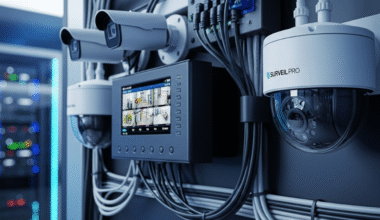Professional Standards Through Transparency
Office and business surveillance raises understandable questions about privacy, trust, and workplace culture. However, when implemented thoughtfully with clear policies and legitimate business justification, surveillance maintains reasonable conduct standards while protecting both employers and employees.
The Business Case for Workplace Monitoring:
Professional Behavior Standards: Awareness that conduct is observable encourages professionalism, appropriate language, respectful interactions, and adherence to workplace policies—creating more positive work environments for everyone.
Harassment Prevention: Surveillance deters inappropriate behavior, sexual harassment, bullying, and discrimination—creating safer workplaces while providing evidence when complaints arise, protecting both victims and falsely accused individuals.
Intellectual Property Protection: Monitoring prevents unauthorized photography of proprietary designs, theft of trade secrets, data breaches, and corporate espionage—safeguarding competitive advantages and confidential information.
Policy Compliance Verification: Visual evidence documents adherence to safety protocols, customer service standards, operational procedures, and regulatory requirements—supporting compliance efforts and defending against violations.
Dispute Resolution: When conflicts arise about what happened, who said what, or how situations unfolded, surveillance footage provides objective evidence—resolving disputes fairly rather than relying on conflicting testimonies.
Training Opportunity Identification: Reviewing incidents reveals training gaps, unclear procedures, and skill deficiencies—enabling targeted employee development that improves performance and reduces future problems.
Legal Protection: In litigation involving wrongful termination, discrimination claims, or workplace incidents, surveillance footage provides crucial evidence supporting legitimate business decisions and refuting false allegations.
Ethical Implementation Principles:
Transparent Policies: Employees should clearly understand surveillance exists, what areas are monitored, how footage is used, and privacy protections in place—building trust through openness rather than creating atmosphere of secretive spying.
Privacy Respect: Restrooms, changing areas, break rooms, and other private spaces should remain surveillance-free—balancing legitimate business interests with employee dignity and legal privacy requirements.
Limited Access: Surveillance footage should be accessible only to authorized personnel with legitimate business need—preventing misuse, gossip, and inappropriate viewing that damages workplace culture.
Defined Retention: Clear policies regarding how long footage is stored and when it’s deleted demonstrate responsible data management and respect for employee privacy.


